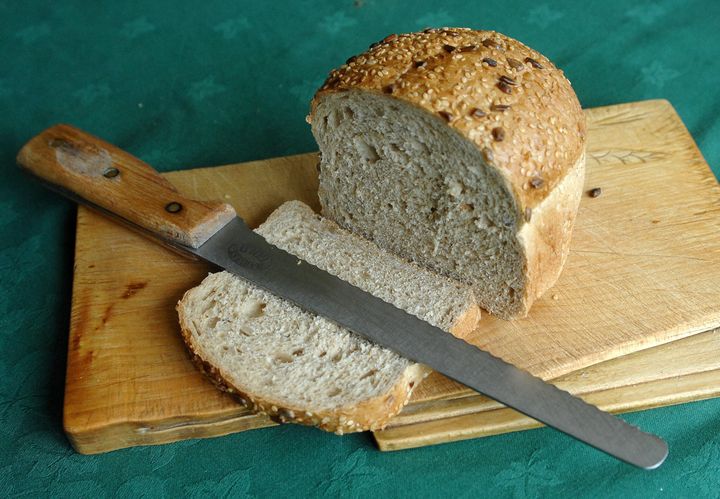
Some call it "yoga bleaching." But among industry marketers, there's a more generic term: "conceptual marketing". How does it work?
Take a trendy niche leisure practice like yoga and start promoting it as an all-encompassing "lifestyle." Brand other products and activities as part of this same lifestyle, and invite millions of mainstream consumers to experience it with their credit card -- even if they never attend a single yoga class.
Then retreat to corporate headquarters and watch ever-so-mindfully as the Benjamins start rolling in.
Sadly, and rather transparently, "conceptual" marketing works for a simple reason: it treats upscale suburban consumers with wads of disposable income as soul-starved wannabes. The case of high-end yoga clothing manufacturers -- most notably, the Canadian-based boutique apparel firm Lululemon -- is already well-known. Lulu, whose stores feature yoga classes taught by local instructors, grossed$60 million in the second quarter of 2012 alone; its founder, Chip Wilson, is a fat and happy multi-billionaire.
Paradoxically, it's not clear how many of Lulu's consumers actually practice yoga. But does it matter? They're ga-ga over Lulu's $120 stretch pants, which double as comfortable leisure wear. In recent months, jealous mass retailers like The Gap and Nordstrom's and a plethora of smaller companies like Lucy Active Wear -- desperate to mimic the "Lulu Pose," but cater to the middle class -- have begun rolling out their own cut-rate yoga apparel lines (at roughly 60 percent the cost).
And it's not just clothing. Increasingly, it's food, too. Walk down to your local co-op -- as I did recently in Washington, DC's counter-cultural mecca known as Takoma Park -- and check out some of the new "organic" breads. The Takoma food co-op in my neighborhood offers breads from The Baker, a small "alternative" company based in another one-time hippie paradise, Boulder, Colorado. The Baker offers the usual assortment of rye, raisin, whole grain, low-carb, and wheat brands, of course. But look closely and you'll find something else: "Yoga Bread."
That's right. After donning your Lulus, rolling out your Jade mat, and performing a few Sun Salutations, you're probably ready for a light breakfast. And if The Baker has its way, that simple piece of buttered toast you're eating will never be the same.
How do I know that The Baker's Yoga Bread is potentially just the latest New Age consumer "con"? Let's start with what the company says about its product's alleged contribution to yoga:
Yoga is about cultivating the authentic 'you' while being mindful to your body, to others and to this earth. There are five yoga principals [sic] to follow: proper exercise, proper breath, proper relaxation, proper diet, and positive thinking and meditation.
The Baker has consciously blended whole wheat with cranberries, pumpkin seeds, flax seeds, and poppy seeds. Yoga Bread contains nutritional ingredients to sustain the hungriest yogini.
We can't guarantee that you will be able to touch your toes after eating the Baker's Yoga Bread, but we can guarantee you being one slice closer to following a proper diet.
Sounds wonderful, doesn't it? And compared to Wonder Bread and to some other faux "healthy" brands, Yoga Bread is undoubtedly a plus. But try comparing it to Wheat Grain Rye, another of the organic brands offered by The Baker. The two products are nearly identically packaged and labeled, except for the "yoga" brand name.
Here, in plain Sanskrit (as it were) is what you'll find:
Wheat Grain Rye
Slices13
Sodium content5%
Calories from fat20
Total calories100
Dietary fiber17%
Protein5 grams
Price$4.59
Yoga Bread
Slices13
Sodium content9%
Calories from fat25
Total calories120
Dietary fiber14%
Protein4 grams
Price$4.95
In other words, upon simple inspection, Yoga Bread has less protein, less dietary fiber, and is twice as salt-laden as Wheat Grain Rye, which carries no fancy conceptual marketing label. Slice for slice, Yoga Bread will actually make you fatter. And, to top it off, it even costs you more. (In marketing parlance, that's usually called a "premium" price, which means that you're paying extra for the privilege of being conned.)
Now let's be clear: Yoga Bread probably isn't "bad" for you. Good Guide, an online product rating company, gives it an 8.2. That's higher than the rating for most other breads on the market, though it's lower than the rating for Wheat Rye (a perfect 10.0) and for other breads sold by The Baker. Still, it's hard to know for sure. It turns out that none of The Baker's brands have received any of the five leading industry "certifications" for organic and healthy products.
Which means, barring a public challenge -- like the one Lulu faced in 2006 when its "live seaweed" shirts turned out to be 100 percent cotton and the company faced sanctions -- for now consumers will just have to take The Baker's word for it. And judging from expanding sales, apparently many have. Thanks to the product's growing popularity, it's now on the shelves at Whole Foods, and in some locations, it's even at Safeway.
Can't find it? It's right down the aisle from Yogadive's no-fat Yoga Chips -- supposedly made from raw fruit, and fully organic, of course. Don't laugh. It's probably only the beginning. At this rate, can yoga-inspired solar-powered toasters be very far behind?